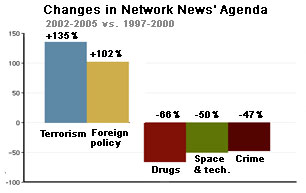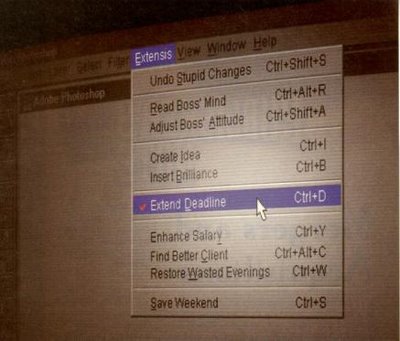Photoshop ethics ...
As part of my media communications degree, I do a unit called Journalism Ethics and Issues. Today's lecture was by a member of the Australian Press Council (APC), Gary Evans [2nd from top].
Gary discussed an instance where the Cairns Post newspaper decided to publish an photo of a scene where two people had been shot after an all-day seige on 17 March, 2001 [can't find the story online -- comment if you want the story and photos and I'll email them to you]. The photo was taken from a helicopter and showed one dead man lying on the front patio and the leg of another man visible through the doorway. However, in publication, the CP whited out the pool of blood around Man 1's head and enhanced the brightness of Man 2's leg so it was more defined.
What an interesting decision: to, in a way, sensitise the gore of Man 1 by making the blood less visible but also bringing out the fact there is another dead body in the image by enhancing the leg of Man 2 in the doorway.
The photo was published in the Saturday (highest rating) edition of the paper and took up all of pages one and two, and the photo in question was printed in full colour, occupying over half of the text space on page one. The headline read `Two gunned down: DEATH HOUSE`.
The CP was chastised by its readers so much that the editor devoted the next Tuesday and Wednesday letters pages solely to letters about the Ravenshoe photograph. All but one letter were against the decision to publish the pic.
There are so many factors that come into this debate: Ravenhoe is a small town and people could recognise the identity of Man 1, but the photo was published in the CP, which circulates in the wider Atherton region so the majority of readers would not associate with the victims; the CP had a duty to cover arguably the biggest story ever out of Ravenshoe, but how much coverage is too much?; this was the first such instance in the region and the CP was giving it the attention -- as far as news value is concerned -- it warranted; what if young children picked up the paper and recognised the corpse? How much sensitivity should the CP show to such a small minority of readers?; in the interests of free press (this was basically Gary's perspective) the CP had a role to play in providing information to the community it serves, and the CP readership would have wanted appropriate coverage of the seige and an important part of that coverage is a photograph that represented the horror which took place; the idea that the CP, as a news service, reports significant happenings in the region, the double shooting is a significant happening, therefore the CP will report in full.
Yes, the CP had an obligation to cover the story effectively and provide the community with information of the significant event, but this information can be communicated without using images of the dead bodies. In my opinion, what is wrong with publishing a photo of the front of the house (the dead bodies were out the back) to show where the shootings took place and then describing the scene to the reader through text: "the body of one man was lying on the pavement with a large pool of blood next to his head.
 Another corpse was visible through the doorway of the squallarly shack ...". This way, the carnage is not in your face like it is with a photo. A picture does tell a thousand words, but sometimes words are more accurate and sensitive in describing a stressful scene.
Another corpse was visible through the doorway of the squallarly shack ...". This way, the carnage is not in your face like it is with a photo. A picture does tell a thousand words, but sometimes words are more accurate and sensitive in describing a stressful scene.There is also the impact the photo would have on the closely associated readers. Although they represent a shaving of the overall readership, the potentially damaging effects of publishing the photo would outweigh the decision to publish. The victim would have had a mother and father, possibly siblings, friends, a partner. To find out your loved one is dead as you eat your Saturday morning bacon and eggs would be traumatic alone -- to see a picture of their undignified corpse would be utterly sickening.
The Press Council eventually upheld the complaints against the CP:
The complaints to the Press Council wrote of the 'ghoulish portrayal of a tragedy' and the 'sickening visual image', of the possibility of many in Ravenshoe and Cairns knowing and being able to identify the victims, of the paper's poor taste and the 'extremely offensive and repugnant' photograph. [full transcript of the adjudication]
There has to be a medium between an unrestrained free press and an influenced coltrolled one. If every photograph of a horrific scene were published, people would simply turn against the press and its purpose would be obsolete. Yes, photographs which best describe a traumatic scene are often the most gruesome, but the information can be portrayed in less confronting and affecting ways. Resistance to publish does not kill a free press. On the contrary, if done ethically, I believe sensitivity can reinforce it.
--
picture: photobucket
Labels: Australian Press Council, Cairns Post, free press, journalism ethics, newspaper, photojournalism









